 One of these days I will rewrite my ancient articles that address the subject of handloading equipment selection. I don’t believe much of the original choices would remain, as experience tends to temper judgment and handloading is an activity that forms to the specifics of the effort.
One of these days I will rewrite my ancient articles that address the subject of handloading equipment selection. I don’t believe much of the original choices would remain, as experience tends to temper judgment and handloading is an activity that forms to the specifics of the effort.
One piece of equipment I use constantly, and without complaint, is my bench mounted RCBS APS priming tool. It is fast, consistent and easy to use. In addition, primers are not directly handled so there is little concern for process contamination. The only task it does not handle well is insertion of the odd one or two primers during load development. After some consideration, mostly accompanied by my grumbling every time I had to break out the bench tool to seat a couple of Large Rifle Magnum BR/Match primers, I decided a hand priming tool was about what I needed.
There is a decent selection of tools of this type available, basically the same tool, but positioned for a different purpose; some for use as I’ve described, others in use for volume production with portable convenience, some as a commitment to ammo quality control and precision handloads. The various models run a wide spectrum of cost, not so much an indication of features and capability, as much as a pricing strategy determined by the manufacturer.
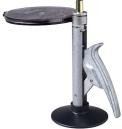 The Hornady Hand-Held Priming Tool is sold through most outlets for approximately $30. It is supplied with a large primer tray, it has the ability to seat small and large primers and requires only the addition of applicable $5 Hornady shell holders to make it fully operational. The stand is a nice touch for providing a firm hold on the press while primers are being seated. The Hornady product includes an adapter to permit the use of RCBS shell holders. No doubt, Hornady recognizes the benefits of drafting the leaders, as they also provide Lock-N-Load bushing adapters for RCBS reloading presses.
The Hornady Hand-Held Priming Tool is sold through most outlets for approximately $30. It is supplied with a large primer tray, it has the ability to seat small and large primers and requires only the addition of applicable $5 Hornady shell holders to make it fully operational. The stand is a nice touch for providing a firm hold on the press while primers are being seated. The Hornady product includes an adapter to permit the use of RCBS shell holders. No doubt, Hornady recognizes the benefits of drafting the leaders, as they also provide Lock-N-Load bushing adapters for RCBS reloading presses.
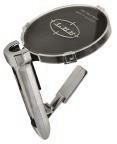
The Lee Auto Prime Priming Tool $16 is a low cost hand primer, in fact, the lowest priced tool in the group. It comes with small and large primer trays and seating rods, and requires the use of Lee shell holders at about $5 each. The primer tray is large capacity and has integrated primer flipping ridges.
Very similar in construction to most of the other brands, there is not much that can go wrong with the tool, and seating leverage mechanical advantage is about the same. The Lee tool may be one of the better buys out there for anyone not sitting on a large inventory of another manufacturer’s shell holders.

Sinclair’s Stainless Priming Tool $98 (right) is the expensive unit in the bunch. The tool is CNC machined, fabricated from stainless steel, but requires the addition of Lee Auto Prime shell holders before it can be put into service. It’s a little curious that such an expensive tool would pick a budget shell holder to control a critical alignment, however, the Sinclair tool is very shiny. On a more serious note, I don’t believe there is a material difference in this product, when compared to other brands, that would warrant this price difference. This does not negate anyone’s desire to just buy expensive stuff.
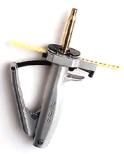
The RCBS Hand Priming Tool APS $35 (right) utilizes RCBS APS mounted primer strips and includes a universal shell holder that will grip about any case. It’s an interesting combination, as the APS strips work well in production, and they do cut down on direct handling of sensitive material. The universal holder is a nice touch and will accommodate folks who do not use RCBS shell holders. It just seemed a little redundant within my set up so I decided to use my existing shell holders and go with the standard loose primer fed product. If I had seen this model, before I bought the other, I probably would have purchased it and would not feel compelled to present this logic stretching justification. Crap.
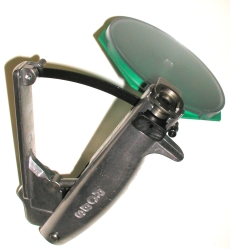
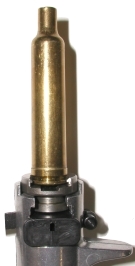 The RCBS Hand Priming Tool at $23 is a moderately price piece of equipment. Not as neat as the APS model, but still pretty nice. It requires the use of $5 RCBS shell holders, but does include bushings for large and small primers. The primer tray is grooved to flip primers correct side up and has capacity for 100 primers. The clear plastic lid rotates to close off the flow of primers. With shell holder installed, the seating rod, bushing and shell holder are locked into vertical alignment. Very nice set up and very easy to use.
The RCBS Hand Priming Tool at $23 is a moderately price piece of equipment. Not as neat as the APS model, but still pretty nice. It requires the use of $5 RCBS shell holders, but does include bushings for large and small primers. The primer tray is grooved to flip primers correct side up and has capacity for 100 primers. The clear plastic lid rotates to close off the flow of primers. With shell holder installed, the seating rod, bushing and shell holder are locked into vertical alignment. Very nice set up and very easy to use.

For those of you who like to take everything apart, and retain a shoebox full of disassembled watches left over from a misspent childhood…… Handloading equipment is mostly received covered with a gunk that kills primers. The hand primer was given the traditional bath in special grease removing solution, also knows as whatever stuff my wife left out next to the kitchen sink to wash dishes.
A thoughtful part of the design is the safety gate. It allows a single primer to safely pass from the primer tray to a well in the primer feed, beneath the shell holder and above the primer rod. As actuation of the handle begins, the slot in the gate moves out of alignment with the primer tray port, preventing any other primers from passing through. The rest of the linkage works like an old flathead Ford valve train, with the fewest parts and the highest design reliability. The only thing I’d like to see is spring loaded rather than gravity return of the primer rod. Considering this design has been in service since slightly before the discovery of fire, and French anthropologists have found no trace of exploded Neanderthal Man, the unit is probably just fine the way it is.
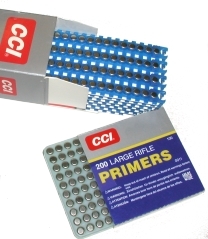

Email Notification